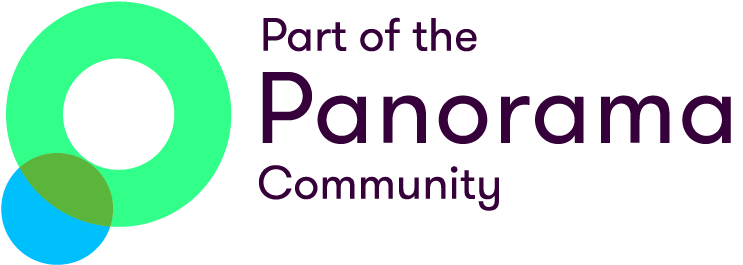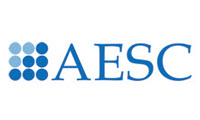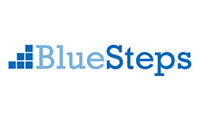An Introduction
Given the current level of uncertainty, making senior appointments for investment purposes can be seen either as a brave or perhaps even a foolhardy decision, but what of strategic gaps in leadership that require immediate attention – notably at Chair, Board, Chief Executive or senior management level? The opportunity cost of waiting until the current situation is over may be too high. Consequently, Nomination Committees and senior selection panels are already seeking to rethink established patterns of appointment and bring a greater use of technology into their processes.
While some organisations have been comfortable with making senior hiring decisions through virtual processes for many years, for others, this is new territory. To aid your organisation’s thinking Hobson Leavy is sharing some of our advice on how to secure the leadership appointment outcomes you need.
General Advice
Communications
Communications platforms such as Teams, Zoom, Skype for Business, Facetime, and Google Hangouts are already being used for videocall/conferencing options, while WhatsApp Business and Slack are popular messenger tools. Bandwidth is also a current issue with several users confined to single sites. Where upgrades via your provider are not possible, you may wish to discuss with cohabitants the timing/scheduling of important video calls. To inhibit Wi-Fi dropout, if you have the option to connect your device directly to your router via an Ethernet cable, this is recommended. Where possible, test your connections ahead of time ensure that a backup communication plan is in place for all participants in case of issues.
Basic Video Call / Conferencing Etiquette
As a preference all participants share their video and audio. If you are not speaking, your microphone should be muted. If Q&A or debate is expected from multiple participants, the moderator should set the visual or verbal gestures to indicate when a person wants to speak e.g. raising your hands. Participants should seek to avoid interrupting others.
Screen Positioning
- Avoid all movement during the videocall – it can be uncomfortable to the viewer and affect connectivity.
- Use desktop or tablet devices as a preference over phones.
- Place your device on a flat surface at a distance that allows the top half of your body to be visible. This will allow for physical expression using your hands to be visible.
- Pay attention to lighting to ensure you are not faded out or shadowed.
- Ensure that the backdrop to your positioning is a neutral one.
- Ensure that all extraneous noise is kept to a minimum to avoid interruptions.
- Pay attention to the desktop settings – solo vs gallery.
- When you are not speaking or in an active conversation, ALWAYS mute your microphone
Appointment Processes
Fully online appointment processes for senior leaders will require additional upfront discussion amongst Nomination Committee/selection panel participants. The technology exists to ensure robust selection processes delivering high quality results. The greatest hurdle is ensuring that participants unused to this model of decision-making feel comfortable in the approach, learn the behaviours required to make it work, and trust its capacity to deliver the right result.
Things to Consider
Candidate outreach
The process of sourcing candidates should remain straightforward for your search partner, given outreach is typically achieved telephonically. Ironically, the availability of potential candidates to discuss roles is likely to increase due to the steep decline in travel time commitments. Of greater consequence is candidate willingness to commit during such a period of uncertainty. Advocacy is thus of the highest importance. It is important that your search firm’s model is predicated on a deep level of engagement with candidates, to answer questions and address uncertainties. A willingness to engage directly with certain high potential candidates early in the process could be helpful as will flexibility on start dates.
Longlisting and shortlisting discussions
Platform
- Microsoft Teams or Zoom are stable platforms for multiple participants.
Connectivity
- The moderator should check in advance that all panel participants feel comfortable with the platform selected and their own level of internet bandwidth.
Chairing/Moderating
- As videoconferencing can remove the natural social cues we tend to follow, the moderator should clearly lay out the structure for the call at the beginning.
Candidate interviews
This is of course the crucial assessment and selection end of the process and thus significant preparation is required given its online nature. Our advice on conducting interviews virtually is below.
Panel interviews
For many, this will feel new territory. There can be a lack of confidence in the effectiveness or fairness of videoconferencing for interviewing.
Pros
- Can be better at offering an equitable candidate experience
- Decision making is more concentrated, each panel member has the same experience of the candidate
Cons
- Panel members can feel uncomfortable forming a view based on a single televisual experience
Staged interviews
You may consider a staged interview process that sees the candidate undertake several interviews over a period which can be concentrated (e.g. over 1-2 days) or spread out over a week.
Pros
- More opportunity to see the candidate in action and thus to form judgements on their performance and fit
- Offers greater flexibility on candidate/client availability to interview
Cons
- Without adequate planning, there is the potential for unnecessary overlap between interviews
- Harder to ensure candidate experience is equitable
Advice on panel and staged interviews
Preparation
Additional preparation is naturally required as videoconference interviews demand more structure. A pre-interview gathering of panel participants should be mandatory to discuss the interview, address problems and apportion responsibilities. A model of common notetaking or scoring should also be agreed in advance. Notes and scoring should only be shared with the panel after all interviews are completed. This works to mitigate bias based on prior feedback.
Questions
Areas for assessment and questions should be allocated in advance as well as the order in which the panel participants will cover them.
Platform
Microsoft Teams or Zoom are particularly stable platforms for panel and staged interviews. Teams can show up to four participants on a single screen. Zoom has the added benefit of showing all participants (up to 25) at the same time either in thumbnail dimensions or as a gallery view. Testing should be done in advance with each candidate.
Interview
Again, the Chair or a lead panel participant should lead. If a candidate presentation has been asked for, this should preferably be delivered without visible aids to ensure the panel can concentrate on the candidate’s communication and presentational skills. Interviews will then follow. For more free-flowing dialogue, the Chair or lead panel participant should be watchful for raised hands by panel participants wishing to ask pre-arranged or supplementary questions.
Residual Questions
Should the panel not feel comfortable about making a decision based on the process to date, inputs gathered and interview panel, there should be discussion on what interventions would ameliorate concerns on the preferred candidate(s). For example:
- Unsure of strength of Communications/Presentational style: Should a further presentation be scheduled to the Panel or larger group?
- Candidate management style: Specific referencing of candidates’ subordinates.
- Strategic grasp of domain area: Set a specific written/presentational task for the candidate.
The care of our clients and candidates remains our top priority. We continue to be on hand to answer all queries so please do not hesitate to reach out to us, and we wish everyone well during these turbulent times.








